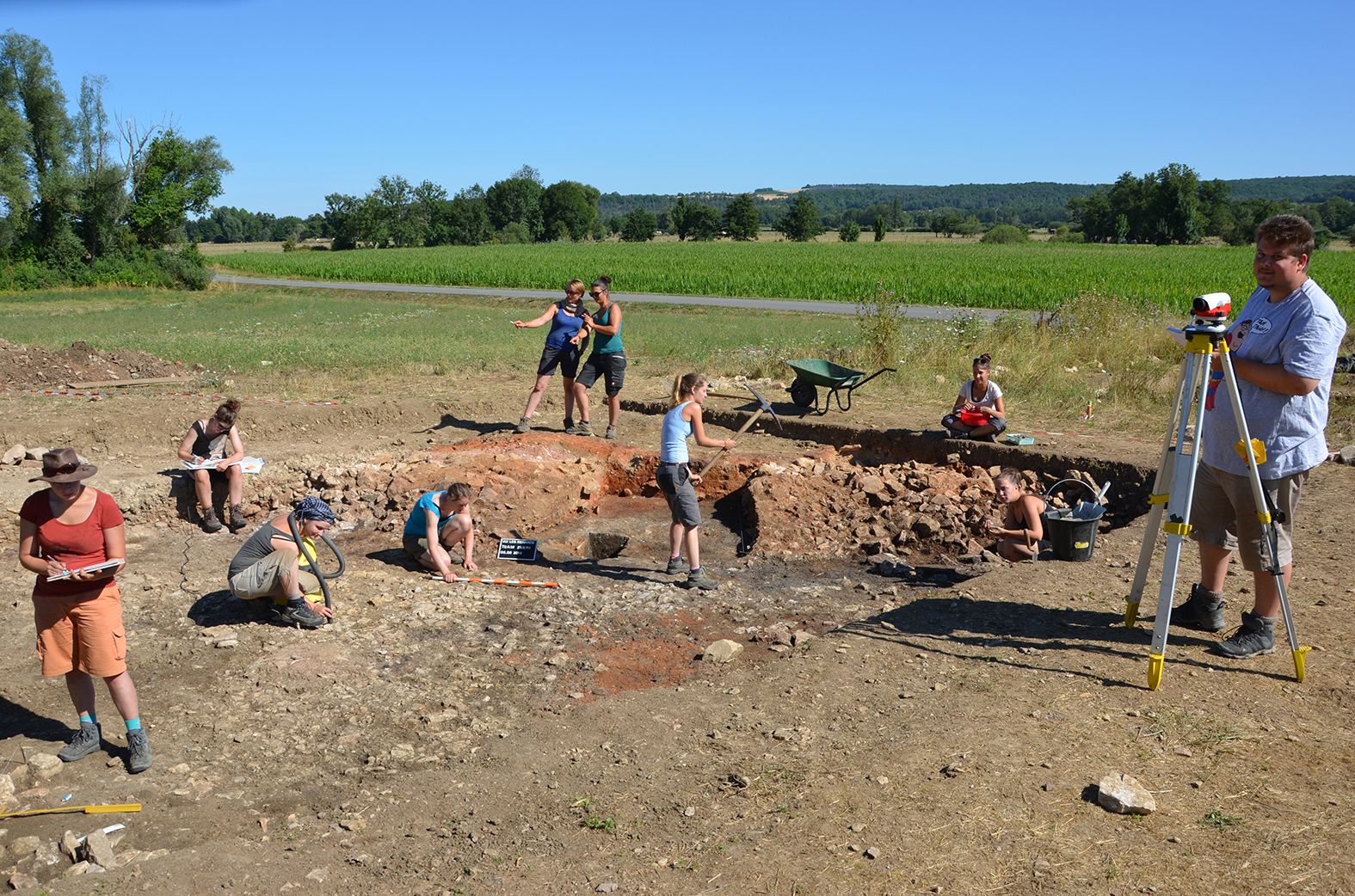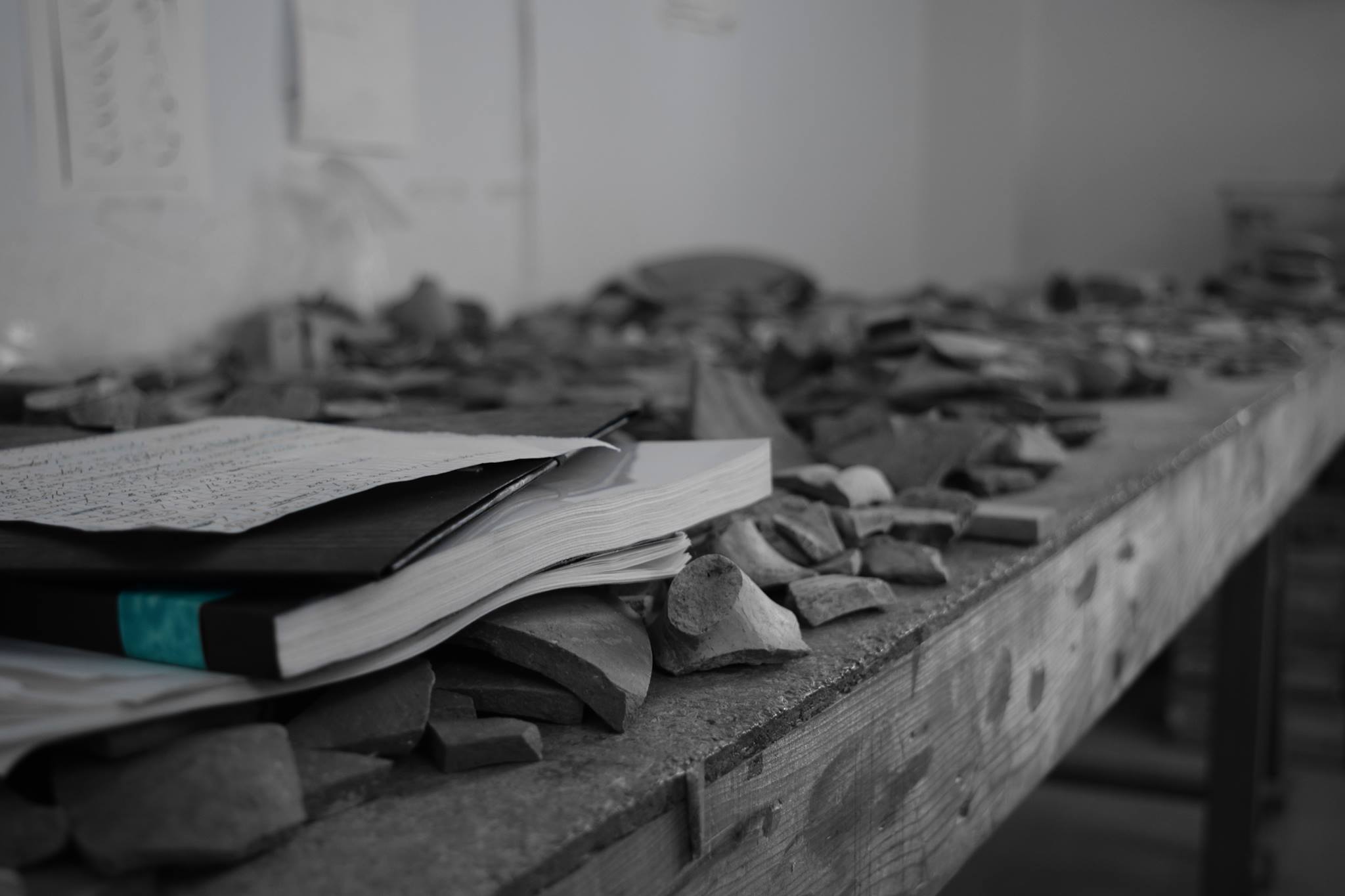Der urnenfelderzeitliche Männerfriedhof von Neckarsulm (BW)
von Steffen Knöpke
Abstract: The Late Bronze Age warrior necropolis at Neckarsulm (BW)
The cemetery of Neckarsulm (South Germany) is an exceptional and extraordinary site of the Late Bronze Age (Hallstatt A period). As this stage`s alternative name "the urnfield period" suggests, cremation and the funeral in cinerary urns was the conventional burial rite at this time. Whilst only few inhumation burials are generally known from this period, it is at this site that inhumation is the common type of burial rite (Neth 2001). Furthermore there are none of the typical pottery sets in the graves and several collective interments of 2 to 5 individuals exist. Another unusual feature are several pits used as fire places, which might have been used for the preparation of roasted pigs (Biel 2001). Because of the extraordinary character of this cemetery it is hard to compare with others of its period.
As far as we know from preliminary investigations by physical anthropologist Dr. Wahl, nearly all of the 51 individuals are men in their (late) adult age and good physical condition, with all evidence of healthy nutrition and no indication of hard labour in their lifetime (Wahl 2001). Although a few graves show signs of plundering, there are many metal objects remaining, including needles, knives and a razor blade. Particularly noteworthy are three short swords and one lancehead which characterise this cemetery as that of a group of warriors. There is no doubt that groups of warriors existed in several prehistoric, historic and recent societies, and that in the Bronze Age the sword is not just a tool but also a symbol of warfare, force and power. This work will concentrate not only on the presentation of the finds and their typological and chronological classification. Utilising traditional as well as modern approaches like those of the social archaeology (Dark 1995/ Renfrew 1984) and the archaeology of warfare (Keeley 1996), this work attempts to contribute to our understanding of this special group of men. Clearaly, however, there is a conclusive evidence of a closed group of warriors. This group needs to be fit into hitherto existing models of social stratification in Bronze Age societies (Kristiansen 1999) and its relationship to the higher ranked persons and to the rest of their society has to be examined.
Biel 2001: J. Biel, Polynesische Schweinebratereien in Hochdorf. In: S. Hansen/ V. Pingel (Eds.), Archäologie in Hessen: Neue Funde und Befunde. Festschrift Fritz-Rudolf Herrmann zum 65. Geburtstag (Rahden/ Westf. 2001) 113-117.
Dark 1995: K. R. Dark, Theoretical Archaeology (London 1995), 88-116.
Keeley 1996: L. H. Keeley, War before Civilization (Oxford 1996).
Kristiansen 1999: K. Kristiansen, The Emergence of Warrior Aristocracies in later European Prehistory and Their Long Term History. In: J. Carman/ A. Harding (Eds.), Ancient Warfare (Thrupp 1999), 175-189.
Neth 2001: A. Neth, Ein aussergewöhnlicher Friedhof der Urnenfelderzeit in Neckarsulm, Kreis Heilbronn. In: Archäologische Ausgrabungen in Baden-Württemberg 2001, 51-55.
Renfrew 1984: C. Renfrew, Approaches to Social Archaeology (Edinburgh 1984).
Wahl 2001: J. Wahl, Nur Männer "im besten Alter"? Erste anthropologische Erkenntnisse zum urnenfelderzeitlichen Friedhof von Neckarsulm, Kreis Heilbronn. In: Archäologische Ausgrabungen in Baden-Württemberg 2001, 55-56.

